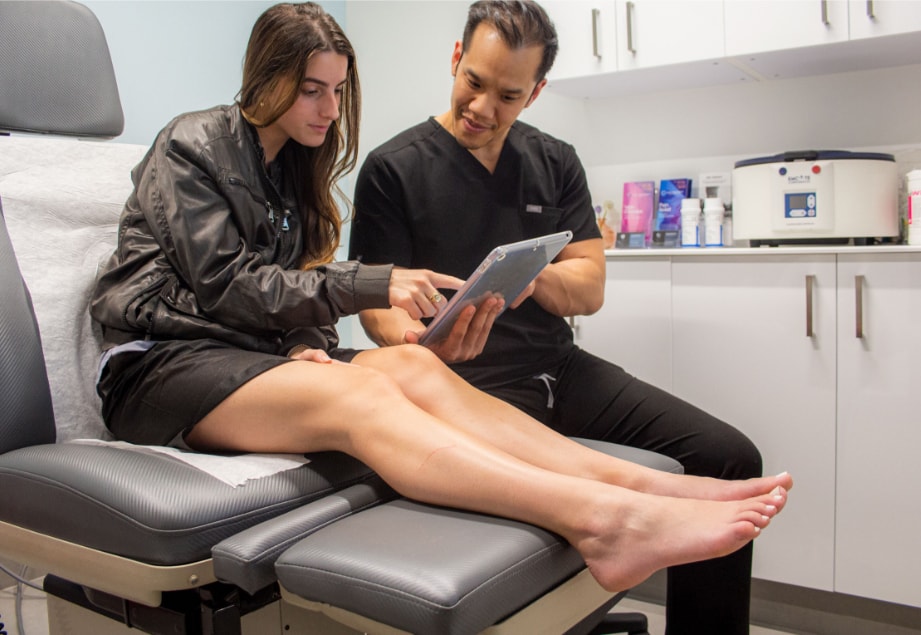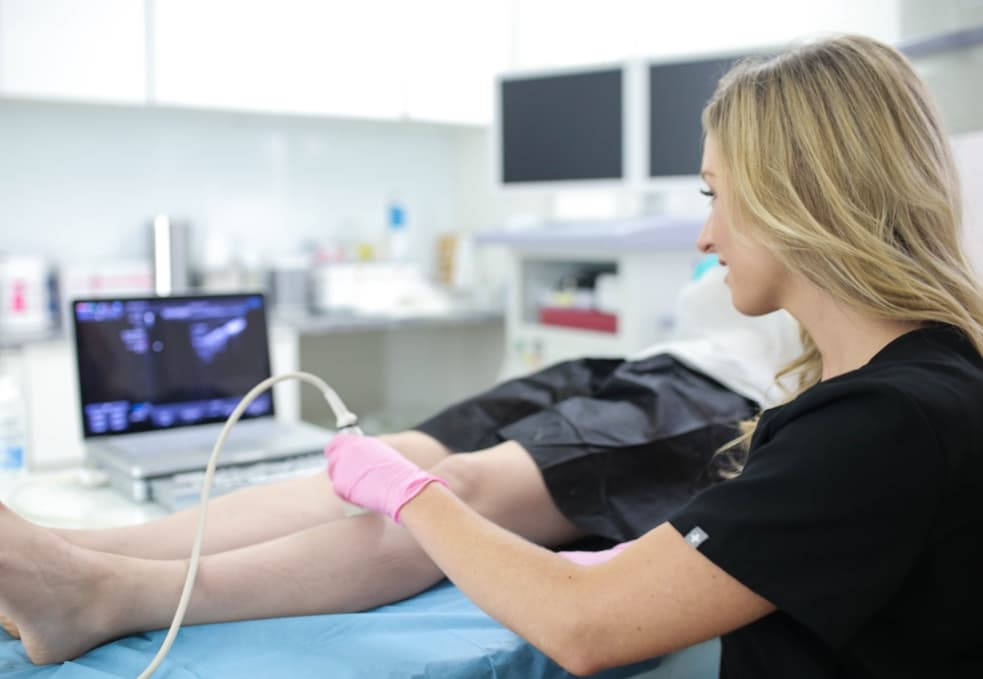Consult a vein doctor (phlebologist) for leg swelling if it worsens at the end of the day
Leg swelling can happen for numerous reasons. You may experience leg swelling because of edema blisters, fluid accumulation in the legs, leg swelling after an accident, or swollen feet and legs for other reasons. However, if you have leg swelling because of chronic venous insufficiency, you must contact a vein doctor or phlebologist, i.e., a physician specializing in the diagnosis and treatment of vascular conditions, such as spider veins, varicose veins, restless leg syndrome, and deep vein thrombosis.
Leg swelling is one of the most common symptoms of chronic venous insufficiency, a medical condition wherein your vein valves collapse and blood accumulates in the leg veins. Venous insufficiency occurs because of the collapse of vein valves. When your vein valves collapse or malfunction, blood flows backward due to gravity and accumulates in the leg veins, eventually leading to vascular dilation, spider veins, and varicose veins. Leg swelling is one of the early symptoms of vein disease.
When blood and fluids accumulate in the lower body, you experience swollen legs and swollen feet. Leg swelling may also happen because of dilated varicose veins bulging out of the skin’s surface. A strong indication that your leg swelling is caused by underlying vein disease is if it worsens at the end of the day or after long periods of sitting or standing still. That’s because the symptoms of vein disease worsen at night and after long periods of inactivity.
If you notice persistent leg swelling that worsens at night, please contact a vein doctor. Our state-of-the-art vein centers in Long Island are led by highly-skilled and talented vein doctors specializing in the diagnosis and treatment of vein disease. We can identify underlying vein disease and the root cause of leg swelling and curate personalized vein treatment plans. Please schedule an appointment to explore your vein treatment options today.

7 signs you may need to consult a vein doctor
Leg swelling is one of the most common signs and symptoms of vein disease. If the symptoms of leg swelling worsen at night, you know you need to contact a vein doctor. But you can also contact a vein doctor if you experience the following signs and symptoms of vein disease — frequent leg cramps, leg pain and discomfort, restless leg syndrome, spider veins, varicose veins, skin discoloration, leg ulcers, and deep vein thrombosis.
Frequent Leg Cramps
Frequent leg cramps are common symptoms of chronic venous insufficiency. When excess blood accumulates in the leg veins, you have sudden involuntary muscle spasms in the legs. The muscle spasms may last a few seconds or minutes, and the sensation may also spread to other parts of the body. Everyone experiences occasional leg cramps, but frequent leg cramps are indicative of chronic venous insufficiency.
Leg Pain/ Discomfort
Leg pain and discomfort are common symptoms of chronic venous insufficiency. When blood accumulates in your leg veins, your legs start feeling heavy and uncomfortable. You may also experience exhaustion and fatigue, especially as the day progresses. You might chalk this down to aging or exhaustion, but it might be caused by vein disease.
Restless Leg Syndrome
Restless leg syndrome is a condition wherein you have an incessant and urgent need to move and shake your legs and feet. This condition usually worsens at the end of the day or after long periods of inactivity. You can engage in some cardiovascular activities to minimize the symptoms and sensations, but the relief will be temporary until you address the root cause — chronic venous insufficiency.
Spider Veins
Spider veins are dense clusters of blood vessels and broken capillaries that appear on the skin’s surface, just underneath the epidermis. Spider veins can look ugly and cause self-consciousness. The presence of spider veins is often indicative of underlying vein disease. If you notice spider veins, please contact a vein doctor for a thorough diagnosis and treatment.
Varicose Veins
Varicose veins are large, bulging blood vessels that protrude out of the skin’s surface, looking like a mass of tangled and knotted ropes. They’re usually indicative of advanced chronic venous insufficiency. If left untreated, they might continue dilating and eventually burst, leading to profuse bleeding. Please contact a reliable vein doctor for varicose vein treatments.
Skin Discoloration
Skin discoloration is one of the advanced complications of vein disease. As blood continues accumulating in the leg veins, you suffer from poor blood circulation in the legs, leading to discoloration of the skin. You might also develop rust-colored and leathery patches on the skin because of the breakdown of blood cells.
Leg Ulcers
Leg ulcers are non-healing wounds on the legs, and they usually appear at the latter stages of varicose veins. Ineffective blood circulation prevents your wounds from healing effectively, leading to deep leg ulcers. The presence of leg ulcers also makes you vulnerable to other complications, such as infections.
What is the diagnosis and treatment of vein disease?
When you contact our board-certified vein doctors in Long Island, they perform a thorough diagnosis and treatment for leg swelling. The vein doctor will examine your leg veins, discuss your symptoms, and administer vascular imaging tests to visualize the root cause of your vein problems. After diagnosing vein disease, the vein doctor will curate a personalized treatment plan consisting of minimally invasive procedures, such as radiofrequency ablation, endovenous laser ablation, and ambulatory phlebectomy. Please schedule an appointment to explore your varicose veins edema treatment options.

